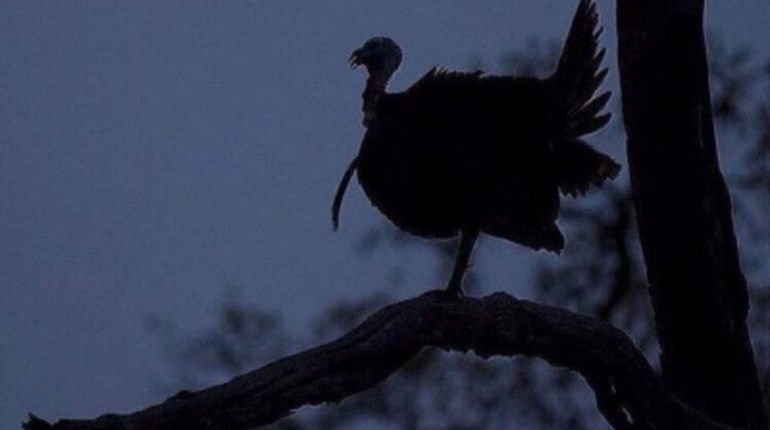
The two gobblers stood eyeball-to-eyeball in the plowed field. They purred aggressively as they positioned themselves for the fight. With a flapping of wings they locked their long, ugly necks around each others' and made the dust fly as they flopped.
I picked-up my 4-Play box call and cut very loudly. The toms stopped fighting and began to race to the sound of the vocal hen. “Let ‘em come,” I whispered to Spencer, my middle stepson. “Shoot the big one,” advised Caleb, my son and Spencer’s stepbrother. Caleb had killed a 23-pound gobbler two hours before this fight broke-out.
At twenty steps, Spencer ended the race, the fight, and his hunt with one shot. A second 23-pound spring gobbler got in line for our skillet, and as the 21-pound companion of Spencer’s bird circled his flopping buddy, I filled my tag by adding gobbler number three to that incredible morning.
There are few things more fun and gratifying than sharing a successful turkey hunt with a young hunter, especially if that young hunter is one of your own. However, there are some “dos and don’ts” when it comes to guiding a youngster on a spring turkey hunt. I would like to take a few minutes to discuss those issues today.

Don'ts
First, let’s look at some things to avoid that make turkey hunting in the spring unpleasant for kids. The first deterrent is the alarm clock. On the opening day, this may not be a factor, but if multiple days are required to get your young hunter close to a gobbler, a better plan of starting later in the morning might be your best bet.
You need to locate a late-morning strut-zone and construct a natural blind. Let your protégé sleep in until 7:00 or even 8:00 a.m. Get into position between 9 and 10 a.m. and let your decoys and calling do the work. As veteran turkey hunters, we know that late-morning toms can be very aggressive and could give a young gun a real thrill. This method will help prevent “sleepy hunter burn out.”
Don’t sit your new hunter down under a locust tree or in a multi-flora bush. Please take along a comfortable seat and take a few extra seconds to make sure they’re not sitting in an awkward position or are uncomfortable. Also remember that your shooter is much smaller than you are; make sure they’re sitting high enough to see and hit their target when it arrives.
My final piece of “don’t do” advice is not to expect too much of any young hunter. Their pace and enjoyment must be at the top of your list of priorities. If bagging a 25-pound tom with an 11-inch beard is the only way you can measure success, then take your kid to the zoo. Fun is the name of this game, and you do whatever it takes to make this experience fun for them. If that includes an hour-long nap right at fly-down time, then let it happen. We must take every opportunity to make kids fall in love with hunting.

Dos
Now for some things to make sure you do when the kid, the gun and the gobbler all arrive on the same morning. First, bug spray is a must. There is nothing that turns me off quicker that scratching bug bites while waiting on that perfect shot. Kids are worse; they’re looking for reasons to fidget, and bugs are their best excuse. Spray everyone down well and hope they’ll sit still.
A good tip anytime you’re taking a child away from the comforts of home is to pack lots of snacks and drinks. Even if you only drive a few minutes to hunt and you don’t plan to be out more than a couple of hours, snacks will make the kid’s day and you’ll keep them in the field longer by providing a few creature comforts.
Sometimes a spring hunt can be hot. If you’re in a manufactured blind and/or wearing a head net, the heat can be stifling. Keep your youngster cool by building natural cover blinds, which are more open and airier, and use camouflage face paint instead of a net. The face painting can be the best fun you have all day.
I can also recommend just about the opposite on the right days. Often spring weather can be cool and wet. This does not mean the gobblers go inside, but you certainly can. These are days when a manufactured blind is perfect for both warmth and to stay dry. On a bad day, the right blind can give you many more hours of comfortable hunting, and every minute you can stay in the field increases your chances to fill both their tag and your skillet.
These easy-to-understand tips are just some of the things we can do to help pass along the tradition of spring turkey hunting to the next generation. We owe thanks to those who mentored us through this process. The best thanks we can give is to make sure our kids learn to appreciate what the Good Lord has given us and to manage those resources properly. Hunting is one of those ways.

































